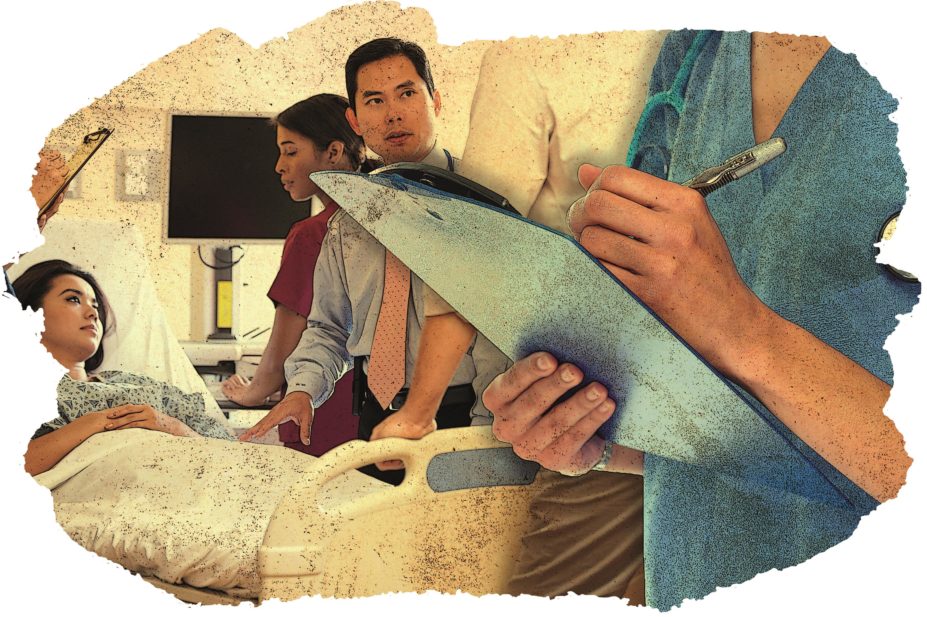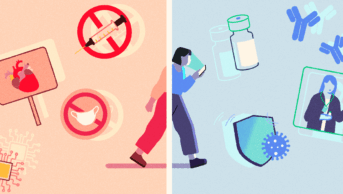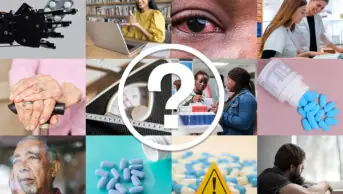
The Pharmaceutical Journal / Shutterstock.com
As I stood by the patient’s bedside I annotated the Buccastem prescription with prochlorperazine for what must have been the twentieth time that day. It felt like the hundredth. There must be a better way, I thought as a junior hospital pharmacist, to get the same message out to the all of the doctors at once, rather than us all correcting the same mistakes.
Most of us have probably been irritated by the same thoughts at some point in our careers. I did enjoy my job, but sometimes I wanted a little more efficiency. And then there were the times that the prescribing error was serious – patients prescribed medication despite allergies, doses too high or too low, interactions. On many occasions it was difficult to get in touch with the doctor who had made the error and so, although the mistake was rectified, the prescriber that had made the error remained blissfully unaware.
The EQUIP[1]
study found that prescribing error rates for junior doctors are around 9%. One of the key recommendations from the study was to feedback errors to prescribers so that they learned from their mistakes. However, I’m sure I was not alone amongst hospital pharmacists in choosing my battles. The prescribing errors that would have caused serious harm, yes they would get fed back to a prescriber, although often not the prescriber that made the original error. But asking them to use the generic name for Buccastem? There was never enough time in the day.
When I became an education and training pharmacist, I realised I was now in a position to do something about it. With support from our chief pharmacist, myself and the education and training team launched a “Learning from prescribing errors” project to attempt to improve prescribing by feeding back serious and common errors to all junior doctors.
The aims of the project were to:
- Develop ways of identifying important errors most appropriate for feeding back to prescribers
- Identify mechanisms of feeding back errors to prescribers
- Feed-back errors with learning points and background material to enhance learning.
- Reduce the number of prescribing errors
- Ultimately, increase patient safety
We identified a way to get monthly reports of prescription errors from the incident reporting system. When the details reported on this system were sparse we were often able to contact a pharmacist or other multi-disciplinary team member who knew more about the error.
We needed ideas to work out the best ways to feedback errors, and so we approached a number of safety and education groups. We were concerned that the prescribers may think they were being punished or picked on for making errors, but we got overwhelming support for the project from the junior doctors who said that they would prefer feedback which would give them chance to learn rather than continuing to make the same mistake.
The research informed us that email would be a good way to receive the information; that way they could read and digest at their own pace, and save for future reference. They also felt that face-to-face feedback would be advantageous; hence it was decided to negotiate weekly prescribing teaching slots in the F1 teaching programme. We managed to arrange 15 minutes per week to feedback important errors.
And so, in August 2013, the project began. Errors were fed-back to F1s and F2s in the form of a weekly prescribing newsletter, and the F1s had face-to-face teaching each week, predominantly delivered by myself. Since then the project has snowballed. In October 2013 I was requested to send the newsletter to all training grades of doctors. In the following spring, all non-medical prescribers were included in the distribution list. In November 2014 a consultant group requested that all consultants get copied in and, most recently, the CCG prescribing group has requested that it receives it also.
Feedback has been overwhelming. From 80% of F1s surveyed feeling that their prescribing skills have improved (and one third being able to pinpoint specific examples of when the teaching has prevented them from making an error), to the medical director commenting that he is impressed and wanting to receive the newsletter weekly!
And so I think back to the frustrations of life as a junior pharmacist, wanting to make a difference but not yet having the tools or authority to make it happen, and I want to spread the word. Simple projects can make a difference, and this type of project could be easily replicated in any trust.
Reference
[1] Dornan T, Ashcroft D, Heatherfield H, et al. An in depth investigation into causes of prescribing errors by foundation trainees in relation to their medical education: EQUIP study. London: General Medical Council; 2009.


